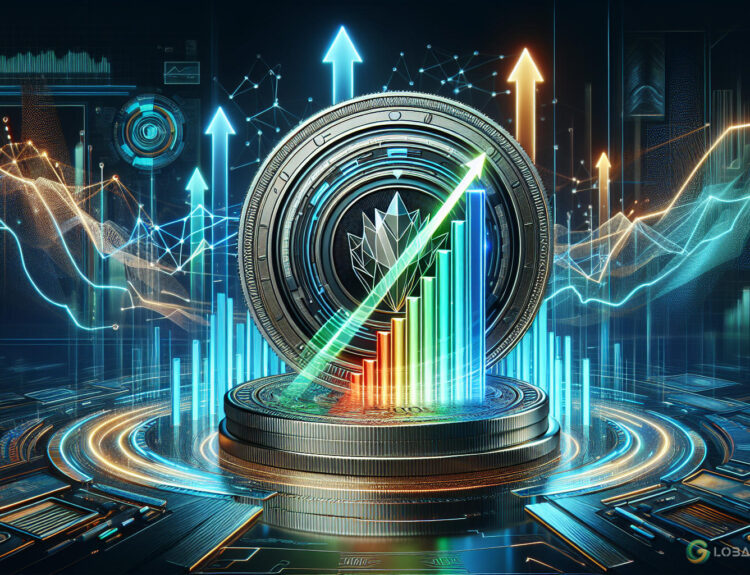Disclosure: The views and opinions expressed here belong solely to the author and do not represent the views and opinions of crypto.news’ editorial.
As cryptocurrencies become more widespread, regulatory issues gain significance. The recent update of the Markets in Crypto-Assets Regulation (MiCA) regarding stablecoins has led to a substantial market boom. These new rules impose strict restrictions on the use of stablecoins denominated in dollars, which dominate global trading volumes.
The Role of Compliant Stablecoins: Bridging TradFi and DeFi
Traditional Finance (TradFi) and Decentralized Finance (DeFi) have existed in parallel for a long time. Together, they can bring unprecedented financial opportunities. However, bridging these two worlds is challenging. In this context, compliant stablecoins hold significant potential as a connecting bridge.
As regulations tighten, compliant stablecoins are expected to become major assets. For example, in the European Union, stablecoin users are already required to transition from unregulated coins to compliant ones, especially if they want to use them with centralized finance platforms where compliant assets are often mandated.
Centralized stablecoins like Tether and USD Coin are at the forefront of this regulatory evolution. Issued by entities maintaining reserves in fiat currency, these stablecoins offer stability and serve as gateways between the crypto world and traditional finance. However, their provision of financial services subjects them to oversight and stricter standards of transparency and consumer protection.
Compliance is critical to ensure the legitimacy of these stablecoins and their integration into the global financial ecosystem. Circle has already made a significant leap by becoming the first global stablecoin issuer to fully comply with the new regulations. More companies are likely to follow this path soon.
Where Do Decentralized Stablecoins Stand?
It should be noted that centralized stablecoins have decentralized counterparts that don’t directly impact centralized financial services. Governed by decentralized protocols, these stablecoins don’t rely on a central issuer or a reserve of fiat currency.
Because they are not linked to the TradFi system, these stablecoins are not subject to regulations like MiCA. However, this also limits their integration into traditional financial services, restricting their role in bridging TradFi and DeFi. For now, decentralized stablecoins remain a component of the DeFi ecosystem, providing liquidity without centralized oversight.
However, centralized stablecoins are likely to become the primary means of entering and exiting the blockchain space. Compliance will ensure their legitimacy and broader integration into the global financial ecosystem. Eventually, all redeemable stablecoins might follow this path due to their custodial nature.
The Risk of Increasing Stablecoin Centralization
There are decentralized stablecoins showing a trend towards greater centralization. A notable example is the recent announcement by MakerDAO regarding the migration of Dai, one of the most popular decentralized stablecoins, to the new USDS. This move sparked significant discussion within the DeFi community, viewed by many as a shift towards a more centralized model.
Increased centralization typically brings greater regulatory scrutiny and compliance requirements. This could limit the use of such stablecoins within the DeFi environment, making them less attractive to users who value the decentralized nature of crypto assets. However, they might capture some of the market currently occupied by USDT and USDC.
Compliant Stablecoins: Controlled Financial System Evolution
Compliant stablecoins offer several advantages that make them foundational for the future financial system. Firstly, they can be redeemed directly through banks and other financial organizations, allowing people to reliably bring their money outside the crypto ecosystem for daily use.
Additionally, compliant stablecoins offer yield opportunities for users. Many crypto users are interested in profit-making through interest payments, staking rewards, or capital gains. Regulated yield products based on compliant stablecoins ensure legal and safe ways to profit. Decentralized stablecoins also offer yield opportunities, often higher than those of centralized stablecoins. Users can choose between yields protected by human laws or by mathematical algorithms based on individual preferences and risk tolerance.
Moreover, the question of whether a stablecoin is fully backed by fiat will be eliminated. Adhering to transparency and security standards will give users greater confidence in the coins’ stability. Fully decentralized stablecoins already offer on-chain transparency, allowing users to verify the backing of the coins themselves. The choice ultimately depends on which trust mechanisms users find more reliable—regulatory frameworks backing compliant stablecoins or the algorithmic transparency of decentralized ones.
In summary, evolving regulations will play a crucial role in shaping the future of stablecoins and their ability to bridge TradFi and DeFi. Compliant centralized stablecoins will help TradFi users engage with digital assets seamlessly and without worries. Decentralized stablecoins will remain separate from traditional financial systems and regulations, serving different needs within the DeFi ecosystem. However, the lines between centralization and decentralization may blur over time.
Predicting the market’s trajectory is challenging, but one thing is certain—compliant stablecoins will enable the composability of TradFi and DeFi. DeFi is poised to be the future of the financial system, and compliant stablecoins will provide a more traditional and controlled way to transform it.
Michael Egorov is a physicist, entrepreneur, and crypto maximalist who stood at the origins of DeFi creation. He is the founder of Curve Finance, a decentralized exchange designed for efficient and low-slippage trading of stablecoins. Since its inception in 2020, Michael has independently developed all his solutions and products. His extensive scientific experience in physics, software engineering, and cryptography aids him in product creation. Today, Curve Finance is one of the top three DeFi exchanges in terms of total volume of funds locked in smart contracts.

























